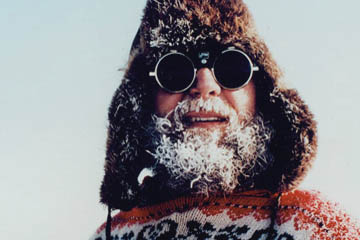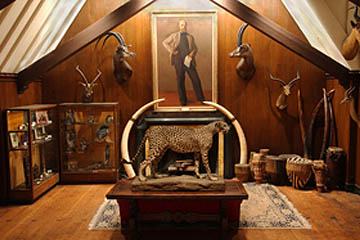
Art Mortvedt. Alaska, USA. / Explorers Club
What’s been to both poles, the top of Mt. Everest and the surface of the moon?
The official flag of the Explorer’s Club, that’s what.
So why has hardly anyone actually heard of the Explorer’s Club if they’ve had such a big role in so many important expeditions? A loose organization of intrepid individuals founded in 1904, the club doesn’t talk much about what goes on behind closed doors.
